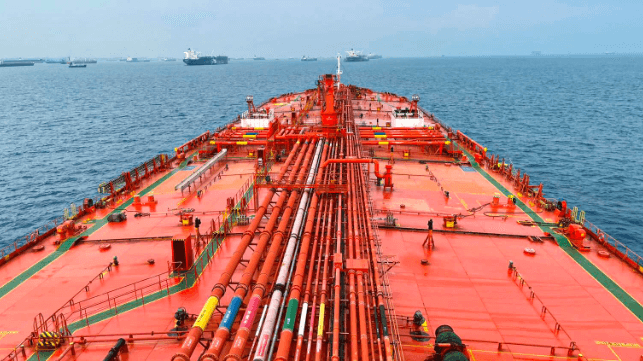Navigating the Digital Seas: Embracing AI for a Smarter Maritime Future

 The maritime industry stands on the cusp of a technological revolution. As one of the oldest forms of global transportation, shipping has historically been slow to adopt new technologies compared to other sectors. However, the advent of artificial intelligence (AI), advanced analytics, and enhanced connectivity is ushering in a new era - one that promises to fundamentally transform maritime operations.
The maritime industry stands on the cusp of a technological revolution. As one of the oldest forms of global transportation, shipping has historically been slow to adopt new technologies compared to other sectors. However, the advent of artificial intelligence (AI), advanced analytics, and enhanced connectivity is ushering in a new era - one that promises to fundamentally transform maritime operations.
I have witnessed firsthand the profound changes that digitalization brings. This is not just about incremental improvements; it is about redefining how we operate, make decisions, and envision the future of maritime logistics.
The Imperative for Digital Transformation
Global trade dynamics are becoming increasingly complex. With mounting pressures to reduce emissions, optimize costs, and enhance safety, the maritime industry can no longer afford to rely on traditional methods. Digital transformation is not a luxury—it is a necessity.
AI and machine learning algorithms enable us to process vast amounts of data generated by vessels, ports, and logistics networks. This data-driven approach allows for predictive insights that were previously unattainable. For instance, by analyzing weather patterns, ocean currents, and vessel performance data, AI can optimize routing decisions to reduce fuel consumption and emissions, contributing to both cost savings and environmental sustainability.
Enhancing Operational Efficiency: A Symphony of AI Solutions
One of the most significant benefits of AI is its ability to predict issues before they become problems, thereby enhancing operational efficiency. Predictive maintenance uses data from sensors installed on critical machinery to monitor performance in real time. AI algorithms analyze this data to identify patterns and anomalies that may indicate an impending failure.
In addition to machinery, AI can predict hull fouling by analyzing data on vessel speed, fuel consumption, water temperature, and biofouling patterns. By forecasting when and where fouling is likely to occur, maintenance can be scheduled proactively, ensuring vessels operate at optimal efficiency and reducing unnecessary fuel costs.
When these capabilities are harmoniously combined, they function like a carefully orchestrated performance, each element contributing to a greater, more efficient whole. Just as individual musicians in an orchestra work in concert to create a symphony, each AI-driven process collaborates seamlessly to elevate maritime operations.
Empowering Crews with Real-Time Insights
Digital tools are not about replacing the human element but augmenting it. Enhanced connectivity at sea ensures that vessels remain in constant contact with shore-based teams. This real-time communication allows for immediate support and decision-making assistance.
For example, if a vessel encounters unexpected weather conditions, AI-powered systems can provide real-time recommendations for course adjustments. Data-driven insights empower the crew, enabling them to make informed decisions swiftly and confidently.
Practical Implementation: The Journey of Continuous Innovation
While grand visions of AI's potential are inspiring, the journey toward realizing them requires practical, incremental steps that deliver immediate value. At OSM Thome, we have embraced this approach by launching an AI virtual assistant called Ask OSM Thome.
Ask OSM Thome provides instant answers based on our Safety Management System, effectively speeding up access to organizational knowledge. Initially launched to our shore teams, we are now rolling it out across our technically managed fleet. From day one, it has been impactful - reducing the time spent searching for information and enhancing our ability to perform tasks efficiently. It has become an invaluable tool in the daily work of our experienced and skilled employees.
Building on this success, we have added more knowledge sources to the assistant, aiming to make Ask OSM Thome the most comprehensive AI knowledge management tool for our colleagues. This continuous cadence of implementing practical solutions demonstrates that meaningful progress is achieved through a series of tangible, value-adding steps.
Strengthening Safety and Compliance
Safety has always been paramount in maritime operations. AI and digital technologies enhance our ability to monitor and manage safety risks. Advanced analytics can predict potential safety incidents by analyzing historical data on accidents, near-misses, and operational anomalies.
Digital platforms also facilitate compliance with international regulations by automating reporting processes and ensuring that all necessary documentation is up-to-date and accessible. This reduces administrative burdens on crews and shore-based teams, allowing them to focus on critical operational tasks.
Advancing Sustainability Goals
The global push towards decarbonization places the maritime industry under significant scrutiny. AI and digital technologies are essential tools in our sustainability toolkit. By optimizing vessel speed, route planning, and engine performance, we can significantly reduce fuel consumption and greenhouse gas emissions.
Moreover, transparent data reporting enables us to demonstrate our environmental performance to regulators, customers, and other stakeholders. This transparency is increasingly important as businesses and consumers alike demand more sustainable supply chain practices.
Embracing Continuous Innovation
Embracing digital transformation is not without its challenges. Cybersecurity risks increase as vessels become more connected, requiring robust security protocols and continuous vigilance. Integrating new technologies with legacy systems can be complex and resource-intensive.
However, these challenges highlight the importance of continuous, practical implementation of digital solutions. By taking incremental steps—such as deploying AI assistants like Ask OSM Thome—we can steadily build towards a grand vision while delivering immediate value.
Conclusion: Embracing Change for a Resilient Future
The maritime industry is at a pivotal moment. By embracing AI and digital technologies through practical, continuous innovation, we have the opportunity to redefine what is possible in shipping and logistics. This transformation requires vision, leadership, and a willingness to invest in new ways of working.
I believe that those who proactively adopt and adapt to these technological advancements—not just in grand gestures but through consistent, practical implementations—will enhance their competitive position and contribute to a more sustainable and resilient maritime industry. It is an exciting time to be part of this journey, and I look forward to the innovations and collaborations that will shape our industry's future.
Jamie Ramsamy is OSM Thome’s Chief Digital Officer.
The opinions expressed herein are the author's and not necessarily those of The Maritime Executive.
